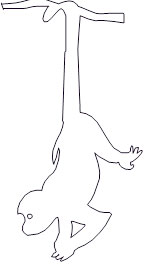Art is a prolific field, constantly evolving on several levels to accommodate human needs and contains the wealth of human creativity at different points in time. A continent of striking cultural richness and ecological diversity, Africa is distinguished by the visual power and creativity of its arts. The art of Africa is traditionally linked to ancestor worship and inspired by high religious feeling. For the better part, objects of African Art are used in ceremonies pertaining to rites of passage.
African Art is characterized by its multiplicity of meanings and intellectual capacity. As in the varied rhythms and competing melodies of Jazz, these differential meanings exist concurrently and harmoniously within the same work, giving it an even larger sense of symbolic and intellectual grounding than it might otherwise have. In African Art, a single form is often intended to mean different things to different members of society, depending on age, level of knowledge and level of initiation.
Complex in its simplicity, the judgment of any kind of art will rest with the artist/creator and ultimately with the beholder. Art offers opportunities, to enjoy its aesthetics and or perceived meanings – thus availing itself to some form of communication. Defining a ‘genuine’ tribal artifact is a complex process. Technically, the term meant all objects created by African Artists, but now, a more restrictive definition applies and that is, that it is dependent on how the object was used.
The African idea of a beautiful object is that it should not only correspond to ethnic artistic rules and concepts, but that in the complex ‘African’ worldview, it should also have the functional ability to perform by way of instruction, protection and healing, of individuals and indeed whole communities.
African objects were almost never created as art for art’s sake. Rather these objects almost always related to magical socio-religious rites. These ‘supernatural’ works were rarely produced by a single individual. Before the making of the many artifacts, there was a long and controlled process including close collaboration between the ‘commissioner’, the village diviner and the sculptor.
Imbued with form and meaning, the Art of Africa serves to communicate it’s diverse and in many ways complex culture to those interested. Even contemporary works, which are often made for the tourist trade do in their own way, serve to communicate something of the culture they relate to, with the outside world. At a tangential level, ethnographic art has its investment value, which it almost never loses. At any point in time, it can be considered to be a reasonably good investment. Relative diminishing traditional cultures and the advancement of ‘modernism’ are principal causes of current scarcity of Genuine Ethnographic Objects.
A final word would rest with the aesthetic sensibility of ethnographic art. These objects of psychological dimension grasp artistic solutions with a great degree of dynamism. Art is instinctual, and for many collectors and purchasers of Art, the most considered reason for acquiring a piece is simply that ‘it speaks’ to them.
For some collectors, African Art is about preserving the dynamic and rich cultural heritage. For others, African Art serves as a reference point for the cubist and abstract art movements, inasmuch as it liberated European artist from the constraints of representational traditions. Still, for some, it represents investment value. Yet for all of them, African Art demands a dialogue and a response to the universal artistic statements inherent in these powerful objects.

 0 items
0 items 